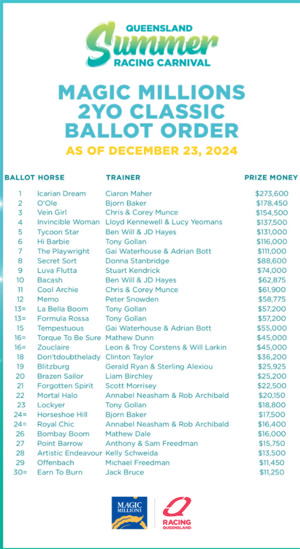Our office is often asked to review tax returns and accounts relating to many industry sectors, with breeders and other primary producers the most prominent amongst the sectors we ‘troubleshoot’ for.
Recently we have seen a common thread relating to valuable primary production tax concessions that are too often overlooked, being:
- Fuel Tax Credits; and
- Special deductions announced in the 2015 Budget relating to fences and water facilities (100% deductible) and fodder storage assets (33.33% p.a. deduction).
The spend on these above items for primary producers is considerable and it is well worth the effort to specifically bring these concessions to your attention.
- Fuel tax credits (‘FTCs’)
Primary producers are entitled to claim a credit for fuel tax (excise or customs duty) included in the price of fuel they use in carrying on their business.
This is known as a Fuel Tax Credit (“FTC”).
It may surprise many, but fuel tax credits are not only claimable for “farm vehicles”. For example, FTCs may be claimed for ‘taxable fuels’ used to operate:
- machinery, plant and equipment (e.g., harvesters, tractors, backhoe loaders, etc);
- heavy vehicles (broadly, vehicles with a gross vehicle mass exceeding 4.5 tonnes) (e.g. horse floats); and
- light vehicles (e.g., a ute or four-wheel motorbike) used for travelling off-public roads.
FTC TIP – Incidental travel of off-road vehicles on public roads
FTCs may be claimed for fuel used in heavy vehicles traveling on public roads for business
purposes (e.g., to transport livestock to an abattoir, sale yard or holding pen), or that are
used off-road for other business uses (e.g., diesel used in a harvester to cultivate grain).
However, the ATO does not require apportionment of FTC claims relating to heavy vehicles
designed for use off public roads and that are not for the purpose of carrying goods or
passengers, if the vehicle travels briefly on public roads.
To be eligible to claim FTCs, a primary producer must be registered (or required to be registered) for GST at the time they acquire the fuel. Furthermore, before a claim can be made, a primary producer must also be registered for FTCs. Note – FTC registration can be backdated to allow the claiming of such credits.
All eligible businesses can claim FTCs, not just primary producers.
How are FTCs calculated?
An FTC entitlement is worked out by multiplying the quantity of eligible fuels acquired for business use by the relevant FTC rate, and is claimed on the taxpayer’s Business Activity Statement (‘BAS’). FTC rates are indexed to CPI twice a year (usually in February and August) and are published on the ATO’s website. The rate that applies depends on when the fuel was acquired, the type of fuel, and whether it is used in a heavy vehicle for travelling on-public roads. A separate rate applies for all other business uses (e.g., diesel used in farm machinery).
EXAMPLE – Claiming FTCs for diesel used in farm tractor
Sophie is a viticulturalist who uses a diesel-powered tractor on her property. On 15 July 2017, she purchased 4,000 litres of diesel for use in the ute.
Sophie is eligible to claim FTCs for the diesel. As the diesel is for off-public road use in a heavy vehicle, Mary must use the rate for “all other business uses” to calculate her FTC. Based on the ATO document, Fuel tax credits – business (QC 52574), the rate is 40.1 cents per litre for liquid fuels (including diesel) acquired between 1 July 2017 and 31 July 2017. Therefore, Mary’s FTC amount is $1,604 (i.e., 4,000 litres x 0.401).
Record keeping relief for smaller claims under $10,000 p.a.
The ATO allows taxpayers who claim less than $10,000 in FTCs each year to use a
simplified approach for keeping records and working out their credits. Under this approach, a primary producer may, for example, use a single rate for a BAS period rather than having to split purchases and use different rates if there is a change of an FTC rate during a BAS period.
- New special deductions relating to fences, water facilities (both 100% deductible) and fodder storage assets (33.33% p.a.)
I’ve often found that Budget night announcements relating to tax changes can be lost amongst all the political commentary so inherent for this major economic event.
A classic example of this was the 2015 Budget tax changes announced to fencing, water facilities and fodder storage assets that were soon “lost” amongst the Budget clutter.
Not just for ‘Small Business Entities’
The crucial aspect to this and other concessions I will outline below is that they apply to all primary production businesses, big and small, not just those classified as ‘Small Business Entities’. This point has been so overlooked in the cases I have reviewed.
- Fences – immediate 100% deduction for ‘fencing assets’
Broadly, a primary producer can claim an immediate deduction for capital expenditure they incur on or after budget night on 12 May 2015 on the construction, manufacture, installation or acquisition of a ‘fencing asset’.
To claim the deduction, the taxpayer must have incurred the expenditure primarily and principally for use in a primary production business the taxpayer conducts on land in Australia. The deduction may be claimed even if the taxpayer (i.e., the primary producer) is only a lessee of the land.
What is a ‘fencing asset’?
A ‘fencing asset’ is an asset or structural improvement that is a fence, and includes a repair of a capital nature, or an alteration, addition or extension to a fence.
The term ‘fence’ takes its ordinary meaning which includes an enclosure or barrier (usually metal or wood) around or along a field or paddock. It also extends to parts or components of a fence including, but not limited to, posts, rails, wire, droppers, gates, fittings and anchor assemblies.
TAX WARNING – No deduction for certain fencing assets
No deduction is allowed under these new rules for a stockyard or pen, or a portable fence (or a capital repair, alteration, addition or extension to such a fence). However, a deduction for such fences may be allowed under the general depreciation rules.
Furthermore, no deduction can be claimed for a fencing asset to the extent that any entity has deducted (or can deduct) on a landcare operation.
- Immediate 100% deduction for Water facilities
Broadly, a primary producer can claim an immediate 100% deduction for capital expenditure they incur on or after Budget night 12 May 2015 on the construction, manufacture, installation or acquisition of a ‘water facility’.
The deduction is also available to an ‘irrigation water provider’, being an entity, whose business is primarily and principally to supply water for use by primary producers.
What is a ‘water facility’?
A ‘water facility’ is plant or a structural improvement that is primarily or principally for the purpose of conserving or conveying water (e.g., dams, tanks, tank stands, bores, wells, irrigation channels, pipes, pumps, water towers and windmills).
The deduction may be claimed even if the taxpayer is only a lessee of the land.
- Claiming deductions for fodder storage assets @ 33.33% p.a.
Broadly, a taxpayer can deduct capital expenditure they incur on or after Budget night 12 May 2015 on the construction, manufacture, installation or acquisition of a ‘fodder storage asset’ over three income years, if the expenditure was incurred primarily and principally for use in a primary production business the taxpayer conducts on land in Australia.
A (depreciation) deduction equal to one-third of the capital expenditure incurred on the construction, manufacture, installation or acquisition of a fodder storage asset is claimed in the income year in which the taxpayer first incurred the expenditure, and the same amount is claimed in each of the following two income years
The deduction may be claimed even if the taxpayer is a lessee of the land.
What is a ‘fodder storage asset’?
A ‘fodder storage asset’ is an asset that is primarily and principally for the purpose of storing fodder. It also includes a structural improvement, or a repair of a capital nature, or an alteration, addition or extension, to an (existing) asset or a structural
The term ‘fodder’ takes its ordinary meaning and refers to food for livestock, usually dried but can include liquid feed and supplements. Examples of fodder are grain, hay, straw, silage, compressed and pelleted feeds, oils and mixed rations, and sprouted grains and legumes.
If you wish to expand or clarify on any of the above matters raised above, please do not hesitate to contact me.
PAUL CARRAZZO CA
CARRAZZO CONSULTING PTY LTD
801 Glenferrie Road, Hawthorn, VIC, 3122
TEL: (03) 9982 1000
FAX: (03) 9329 8355
MOB: 0417 549 347
E-mail: paul.carrazzo@carrazzo.com.au
Web Site: www.carrazzo.com.au










